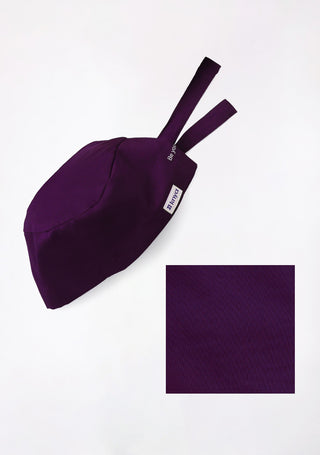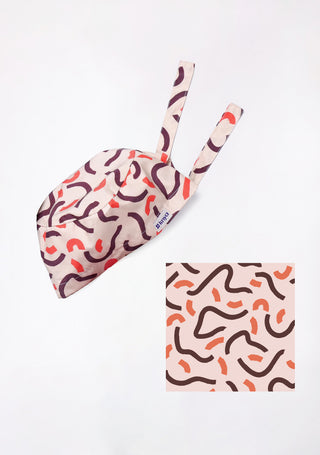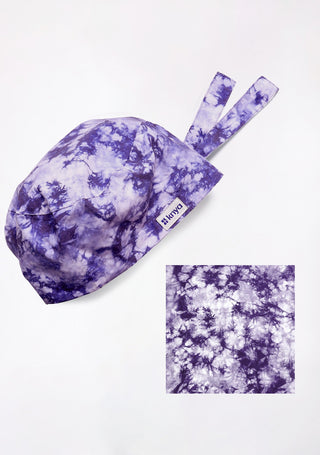Lab coats are a symbol of trust, professionalism, and care — but when you work in healthcare or laboratories, stains are part of the job. Among the most stubborn of all? Blood stains.
Whether it’s a small drop or a larger spill, removing blood stains from your lab coat can be challenging, especially if they’ve dried. The good news is, with the right techniques and a little patience, you can restore your Knya lab coat to spotless perfection — all from the comfort of your home.
Here’s a complete, step-by-step guide to effectively removing blood stains from lab coats without damaging the fabric or color.
Click here to explore comfortable lab coats and discover our complete collection of comfortable and stylish medical apparel
Step 1: Act Fast — Fresh Stains Are Easier to Remove
The quicker you treat the stain, the easier it is to remove. As soon as blood gets on your lab coat:
- Blot (don’t rub) the stain gently using a clean, cold, damp cloth.
- Avoid using hot water initially — heat can set the stain deeper into the fibers.
- If you’re in a clinical setting, rinse the affected area with cold running water as soon as possible.
Prompt action prevents the blood from binding permanently with the fabric, especially for light-colored Knya lab coats.
Step 2: Rinse Thoroughly with Cold Water
Hold the stained area under cold running water. Let the water flow from the back of the stain, pushing it outward rather than deeper into the fabric.
Do this for 1–2 minutes until you notice the blood starting to lift.
If the stain persists, don’t worry — the next steps will tackle it completely.
Step 3: Pre-Treat with Mild Soap or Detergent
Use a mild, enzyme-based detergent or liquid dish soap to break down the blood proteins.
- Apply a few drops directly to the stained area.
- Gently rub the fabric together or use a soft brush to work the soap into the fibers.
- Let it sit for 10–15 minutes before rinsing again with cold water.
Tip: For Knya lab coats, which are designed with durable yet soft fabrics, gentle circular rubbing will help clean without causing wear.
Step 4: Use a Hydrogen Peroxide Solution (for Stubborn Stains)
If the stain is older or dried, hydrogen peroxide can be a lifesaver.
- Apply a small amount of 3% hydrogen peroxide directly to the blood stain.
- You’ll notice some fizzing — that’s normal! It means it’s breaking down the stain.
- Let it sit for 5 minutes, then rinse thoroughly with cold water.
Note: Always do a small patch test on an inner seam before using hydrogen peroxide, especially on colored lab coats.
Ready to explore our amazing scrubs collection? Browse the best here
Step 5: Try Baking Soda Paste for Natural Cleaning
Prefer a gentler, eco-friendly option? Baking soda works wonders.
- Mix 2 tablespoons of baking soda with enough cold water to form a paste.
- Apply it to the blood stain and let it sit for about 30 minutes.
- Gently scrub and rinse off with cold water.
Baking soda not only lifts stains but also deodorizes, keeping your lab coat fresh and clean.
Step 6: Soak in Salt Water (for Older Stains)
If the stain is deeply set, try this traditional method:
- Mix 1 tablespoon of salt in 1 cup of cold water.
- Soak the stained area for 1–2 hours.
- Rinse thoroughly and follow up with a mild detergent wash.
Salt helps break down the proteins in dried blood, loosening their grip on the fibers.
Step 7: Machine Wash Carefully
After pre-treating, wash your lab coat as you normally would — but keep these precautions in mind:
- Always use cold water and a mild detergent.
- Avoid bleach unless the label says it’s safe.
- Air dry instead of using a dryer. High heat can make any remaining stain permanent.
For Knya lab coats, this ensures long-lasting brightness, comfort, and fabric integrity.
Step 8: Inspect Before Drying
After washing, check the stained area.
If the stain hasn’t disappeared completely, don’t dry it yet — heat will set it permanently.
Instead, repeat the hydrogen peroxide or baking soda step until the stain is gone.
Bonus Tip: Prevent Future Stains
While accidents are inevitable, here’s how you can minimize future damage:
- Treat stains as soon as possible.
- Keep a small stain-remover pen or wipes handy at work.
- Wash lab coats regularly instead of letting stains settle in.
- Choose Knya lab coats made with durable, easy-care fabrics designed to resist tough stains.
Why Choose Knya Lab Coats?
Knya designs lab coats that combine comfort, style, and practicality.
Made from high-quality, breathable fabrics, they’re built to withstand long shifts and repeated washes without losing shape or brightness.
Their stain-resistant properties make cleaning easier — a major advantage for doctors, nurses, and medical students dealing with everyday spills and splashes.
A Knya lab coat is not just a piece of clothing — it’s a reflection of your dedication, professionalism, and care for every detail, right down to cleanliness.












